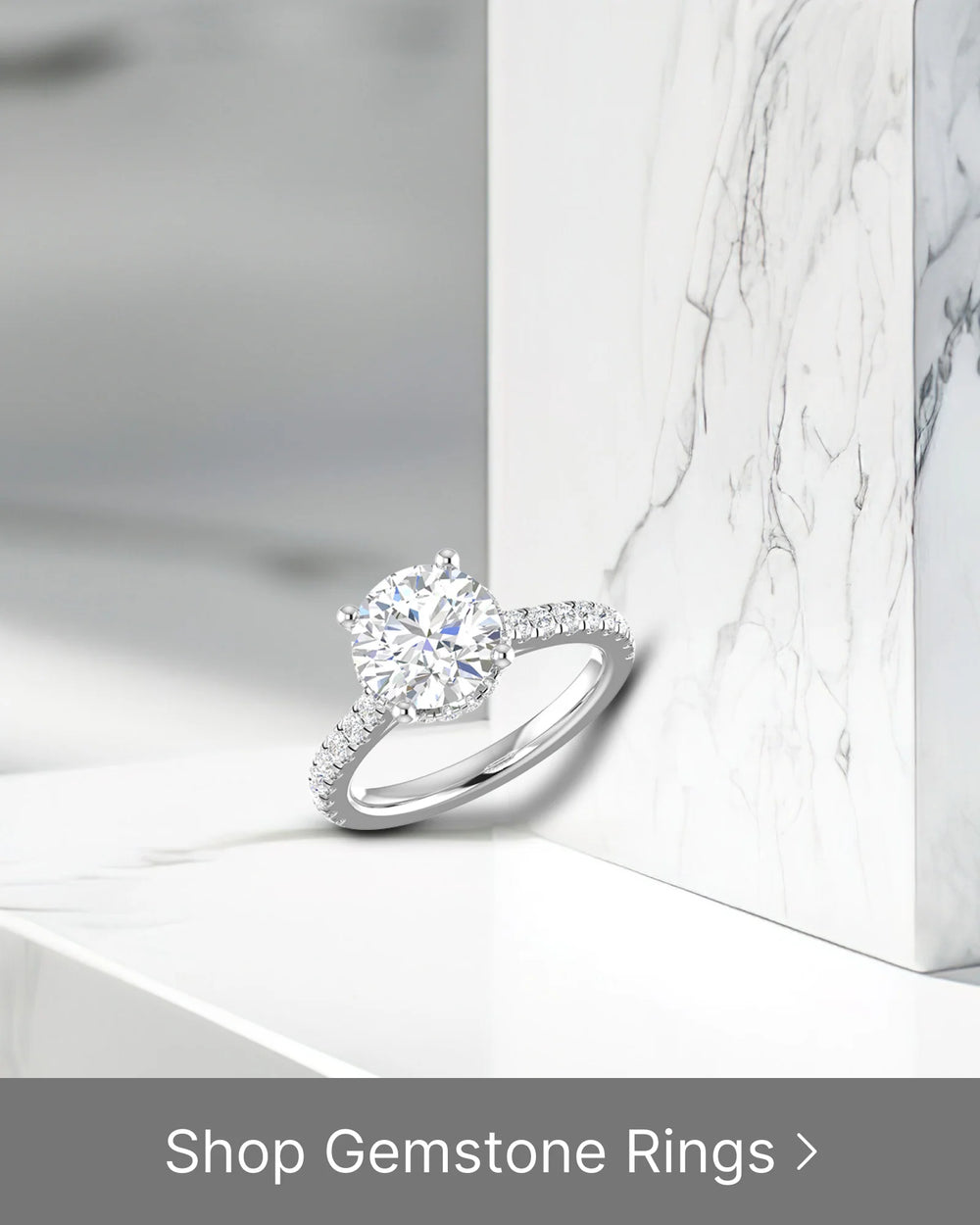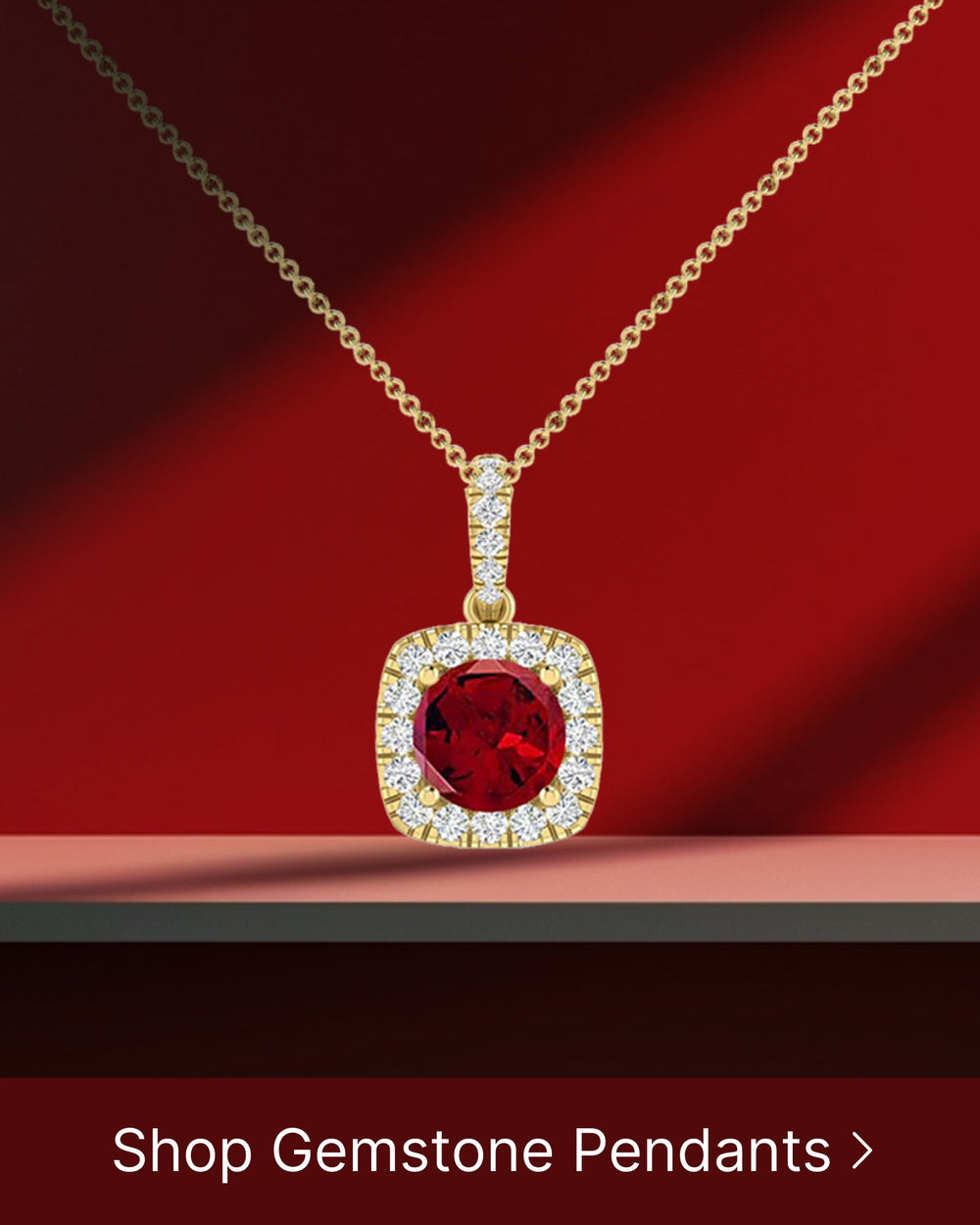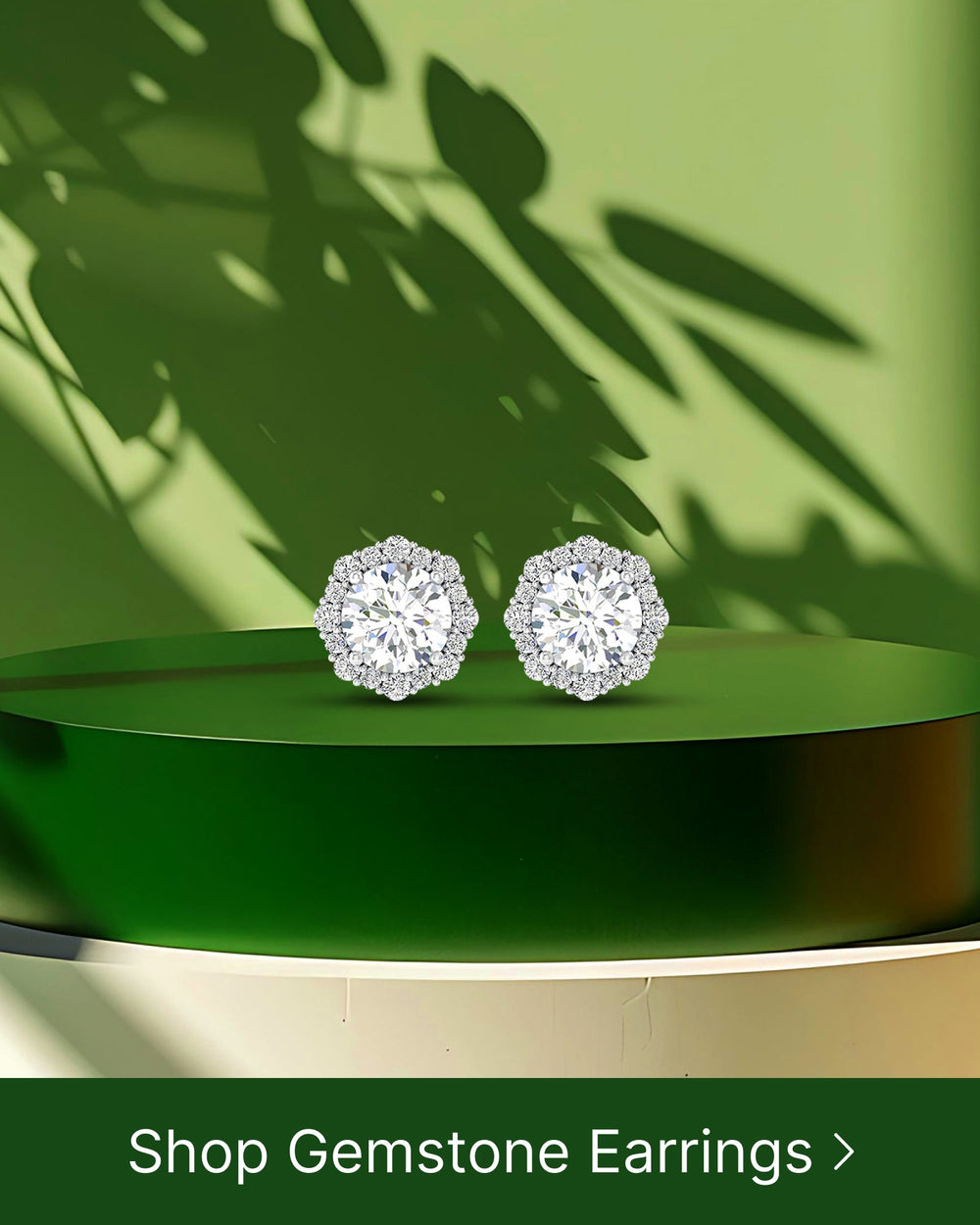Choosing the perfect gemstone for an engagement ring or any piece of fine jewelry can be a daunting task. Among the various options available, diamonds and white sapphires are two popular choices that often leave shoppers perplexed. In this article, we will delve into the intricacies of both gemstones and help you make an informed decision.
Understanding the Basics of Diamonds and White Sapphires
The Formation Process of Diamonds and Sapphires
Diamonds are formed deep within the Earth's mantle under intense heat and pressure. They are composed of carbon atoms arranged in a crystalline lattice structure. This process takes millions of years, as carbon atoms gradually bond together and crystallize. The extreme conditions in the Earth's mantle, with temperatures reaching up to 2,200 degrees Fahrenheit and pressures exceeding 725,000 pounds per square inch, create the perfect environment for diamond formation.
White sapphires, on the other hand, are a variety of the mineral corundum. These gemstones form in igneous and metamorphic rocks through a combination of various chemical elements. The process begins with the presence of aluminum and oxygen-rich minerals in the Earth's crust. Over time, these minerals undergo intense heat and pressure, causing them to transform into corundum crystals. The presence of trace elements such as titanium and iron gives white sapphires their distinctive colorless appearance.
The Physical Properties of Diamonds and Sapphires
Diamonds boast exceptional hardness, ranking at the top of the Mohs scale with a rating of 10. This makes them highly resistant to scratching and suitable for everyday wear. The hardness of diamonds is a result of their unique crystal structure, which allows them to withstand external forces without sustaining damage. Additionally, diamonds have a high refractive index, which gives them their characteristic brilliance and sparkle.
White sapphires, although not as hard as diamonds, still possess a significant level of durability with a rating of 9 on the Mohs scale. However, due to their lower hardness, they may be more prone to scratches over time. It is important to note that white sapphires, despite their name, are not completely colorless. They have a subtle white hue that adds to their beauty and elegance. The refractive index of white sapphires is also lower than that of diamonds, resulting in a slightly different play of light and less brilliance.
Both diamonds and white sapphires are highly valued gemstones, each with its own unique characteristics and allure. While diamonds are often associated with luxury and timeless elegance, white sapphires offer a more affordable alternative without compromising on beauty. Whether you choose a diamond or a white sapphire, both gemstones are sure to captivate and enchant with their natural beauty and enduring appeal.
The Aesthetic Differences Between Diamonds and White Sapphires
When it comes to choosing between diamonds and white sapphires, there are several aesthetic factors to consider. Let's delve deeper into the color and brilliance comparison as well as the cut and shape variations of these two gemstones.
Color and Brilliance Comparison
One of the significant distinguishing factors between diamonds and white sapphires is their color. While diamonds can display a range of colors, white is the most sought-after hue. The brilliance and sparkle of a diamond are enhanced by its colorless nature, allowing it to reflect light with exceptional radiance. The mesmerizing play of light within a diamond creates a captivating visual experience.
On the other hand, white sapphires, as the name suggests, exhibit a pure white color. However, they lack the signature sparkle and brilliance of diamonds. The absence of color in white sapphires gives them a pristine and elegant appearance, but their overall brilliance is comparatively subdued. While they still possess a certain level of sparkle, it is not as intense as that of a diamond.
It's important to note that some people prefer the understated beauty of white sapphires, appreciating their subtle glow and sophisticated charm. Others, however, are drawn to the captivating brilliance of diamonds, which can instantly catch the eye and create a dazzling effect.
Cut and Shape Variations
The cut and shape of a gemstone greatly impact its overall appearance. Diamonds are renowned for their ability to reflect light and maximize brilliance when cut with precision. The craftsmanship involved in cutting a diamond is a meticulous process, aiming to optimize its natural properties and unleash its full potential. Diamonds are available in various classic shapes like round, princess, and cushion cuts, each with its unique characteristics.
White sapphires, although they can be cut into different shapes, do not possess the same light-reflecting properties as diamonds. Due to their inherent differences in optical properties, white sapphires tend to have a more subdued sparkle. To compensate for this, extra facets may be added during the cutting process to enhance their visual appeal. These additional facets can create a mesmerizing dance of light within the gemstone, adding depth and dimension to its overall appearance.
While diamonds are celebrated for their ability to reflect light in a way that creates a dazzling display, white sapphires offer a more subtle and refined beauty. The choice between the two ultimately depends on personal preference and the desired aesthetic effect.
It's worth noting that both diamonds and white sapphires have their own unique allure and charm. Whether you prefer the timeless brilliance of diamonds or the understated elegance of white sapphires, both gemstones can make a stunning addition to any jewelry collection.
The Durability and Maintenance of Diamonds vs White Sapphires
Hardness and Scratch Resistance
As previously mentioned, diamonds surpass white sapphires in terms of hardness and scratch resistance. This means that diamonds are better equipped to withstand the rigors of daily wear without sustaining visible damage. However, let's delve deeper into the fascinating world of diamond durability.
Diamonds are composed of carbon atoms arranged in a crystal lattice structure, which gives them their exceptional hardness. This hardness is measured on the Mohs scale, where diamonds rank as the hardest mineral with a score of 10. This remarkable hardness allows diamonds to resist scratches from most materials, making them ideal for everyday jewelry.
But what makes diamonds so incredibly hard? It's their unique atomic structure. Each carbon atom in a diamond is bonded to four neighboring carbon atoms through strong covalent bonds. This arrangement creates an incredibly strong and stable lattice structure, making diamonds virtually indestructible.
On the other hand, white sapphires, while still durable, may require more frequent care and maintenance to preserve their pristine appearance. White sapphires are a type of corundum, which is composed of aluminum and oxygen atoms. Corundum ranks 9 on the Mohs scale, making it the second hardest natural mineral after diamonds.
While white sapphires can withstand everyday wear, they are slightly more susceptible to scratches compared to diamonds. This is due to the difference in their crystal structures. White sapphires have a hexagonal crystal structure, which makes them slightly less resistant to scratches from harder materials. However, with proper care, white sapphires can maintain their beauty for a lifetime.
Cleaning and Long-term Care
Keeping your gemstone jewelry clean and well-maintained is essential for their longevity. Let's explore the best practices for cleaning and caring for both diamonds and white sapphires.
Diamonds can be easily cleaned using mild soapy water and a soft brush. This gentle cleaning method helps remove any dirt, oils, or residue that may accumulate on the surface of the diamond over time. It is important to avoid using harsh chemicals or abrasive cleaners, as they can potentially damage the diamond. After cleaning, a thorough rinse with clean water and gentle drying with a soft cloth will restore the diamond's brilliance.
In addition to regular cleaning, professional cleaning can further enhance the beauty of diamonds. Jewelers have specialized tools and techniques to remove any stubborn dirt or grime that may be difficult to clean at home. Professional cleaning also includes a thorough inspection of the diamond to ensure its settings are secure and any potential issues are addressed.
White sapphires can also be cleaned using the same method as diamonds. However, due to their slightly lower scratch resistance, white sapphires may require additional attention to remove any built-up dirt or oils. Gently scrubbing the stone with a soft brush will help dislodge any stubborn residue. It is important to be gentle and avoid using excessive force to prevent any accidental damage to the stone.
While regular cleaning is essential, long-term care is equally important in preserving the beauty of both diamonds and white sapphires. It is advisable to store gemstone jewelry separately to prevent any scratches or damage caused by contact with other jewelry pieces. Additionally, it is recommended to remove gemstone jewelry before engaging in activities that may expose them to harsh chemicals or physical impact.
In conclusion, both diamonds and white sapphires are durable gemstones that can withstand everyday wear. However, diamonds excel in terms of hardness and scratch resistance, making them more resistant to visible damage. With proper cleaning and long-term care, both gemstones can maintain their beauty and sparkle for a lifetime.
The Cost Factor: Diamonds and White Sapphires
Pricing of Diamonds
Diamonds are renowned for their rarity and high value. Factors such as carat weight, color, clarity, and cut all contribute to the pricing of diamonds. Generally, the larger and more flawless the diamond, the higher the price. Additionally, diamonds with a higher color grade, such as D or E, often come with a premium price tag.
Pricing of White Sapphires
In comparison, white sapphires are more affordable than diamonds. They offer an attractive alternative for those seeking a white gemstone with a more manageable price point. Although white sapphires may not possess the same prestige or investment value as diamonds, they still exude elegance and beauty.
Ethical Considerations in Choosing Diamonds or White Sapphires
The Diamond Mining Industry
The diamond industry has faced scrutiny over the years due to concerns related to ethical and environmental issues. It is essential to research and opt for ethically-sourced diamonds to ensure that they are free from conflict and comply with responsible mining practices. Various certifications, such as the Kimberley Process, can validate the ethical origins of diamonds.
The Sapphire Mining Industry
The sapphire mining industry also requires careful consideration. While sapphires are generally mined in regions with more established regulations, it is still crucial to verify the source of your white sapphire to ensure it aligns with your ethical values.
Choosing between a diamond and a white sapphire ultimately depends on your personal preferences, budget, and ethical concerns. Diamonds offer unparalleled brilliance and durability but come at a higher price. White sapphires, on the other hand, provide an affordable yet elegant alternative, albeit with a softer sparkle. By understanding the characteristics, maintenance needs, and ethical considerations associated with both gemstones, you can make a well-informed decision that suits your unique style and values.






